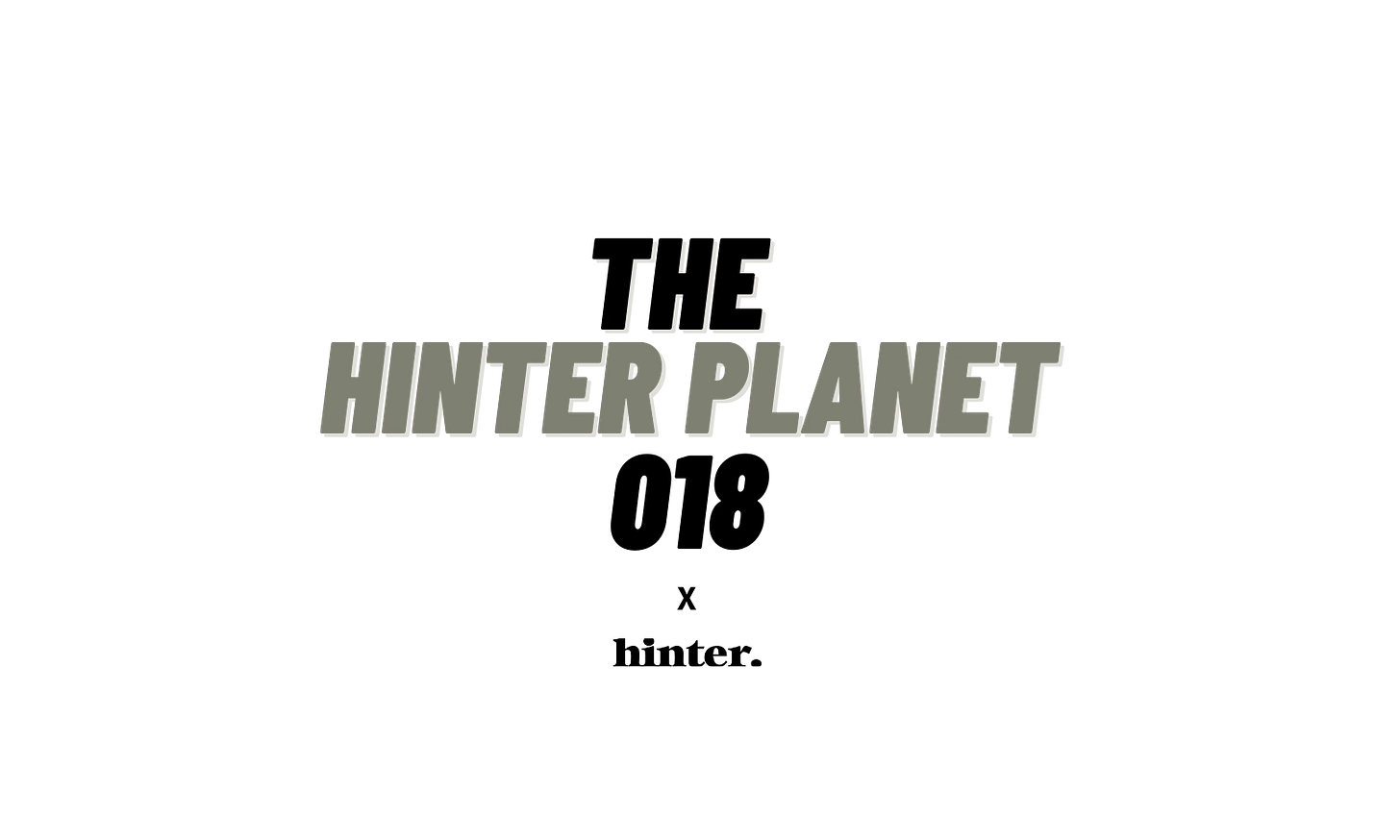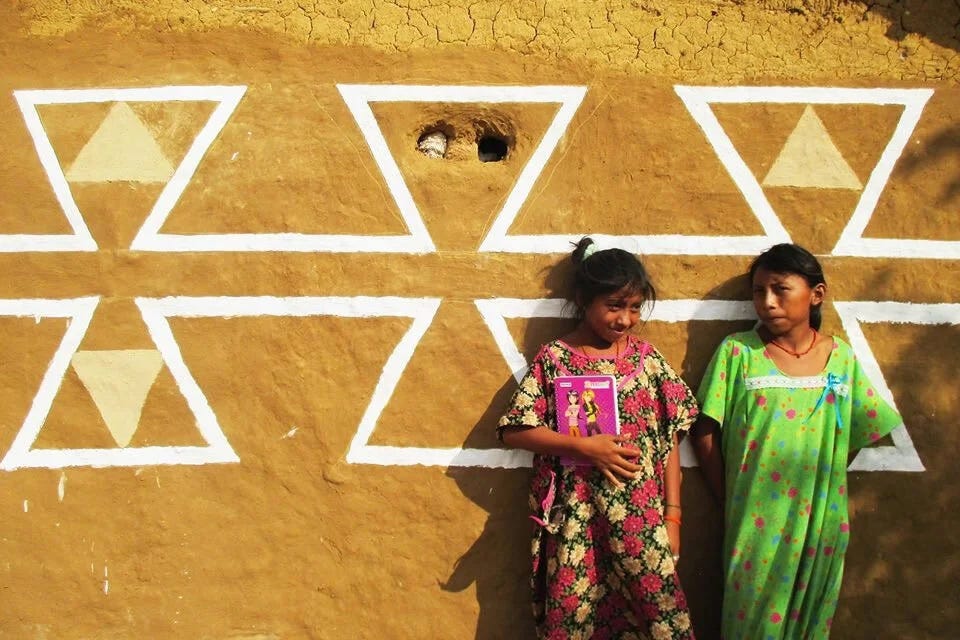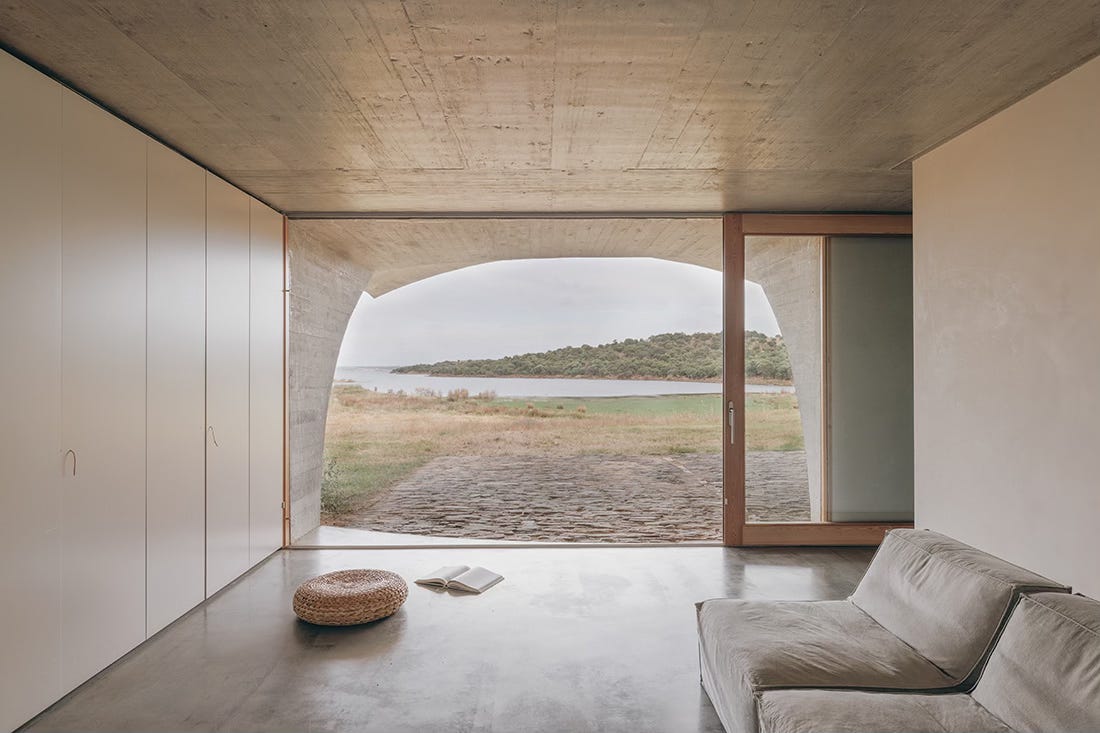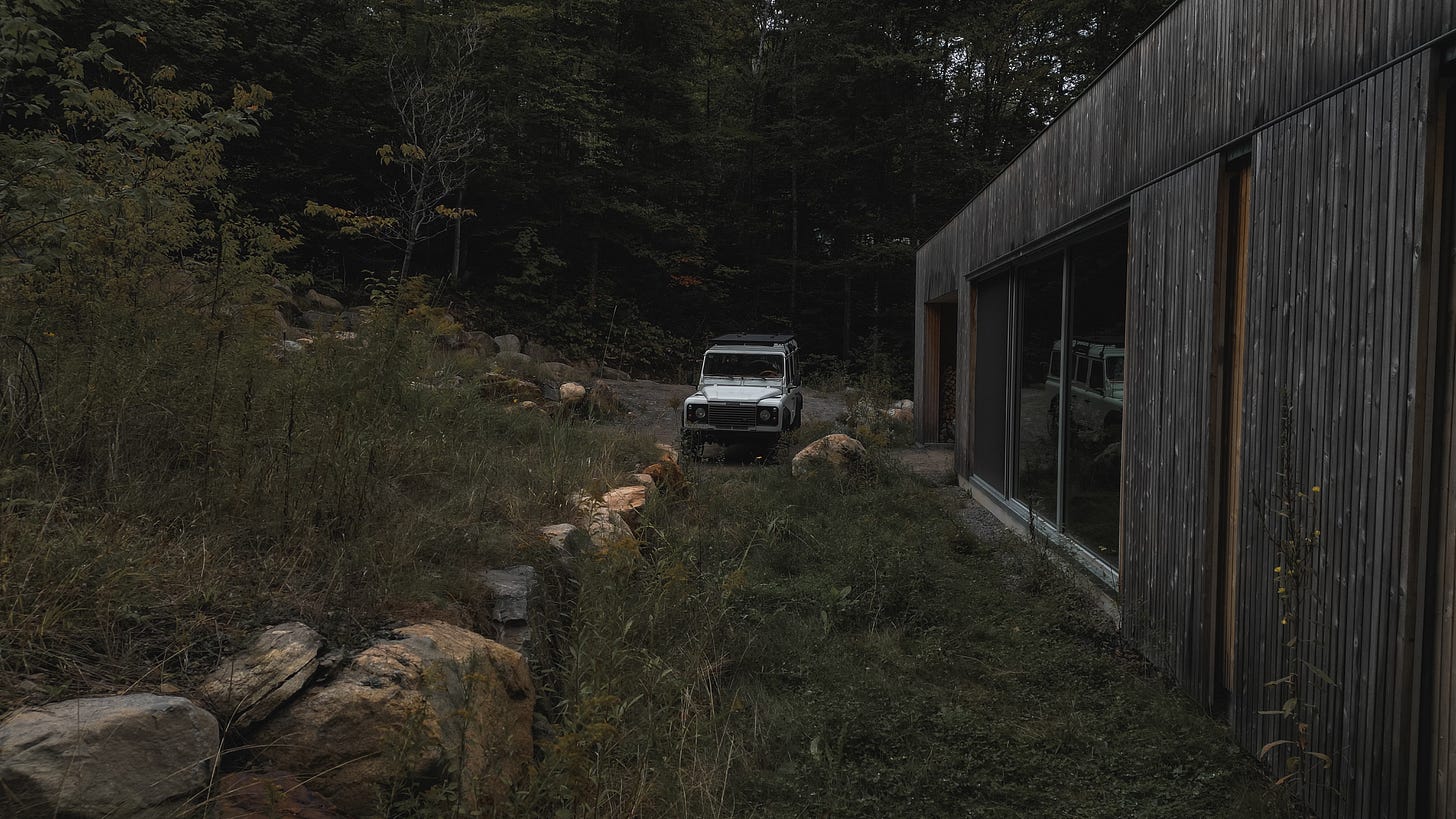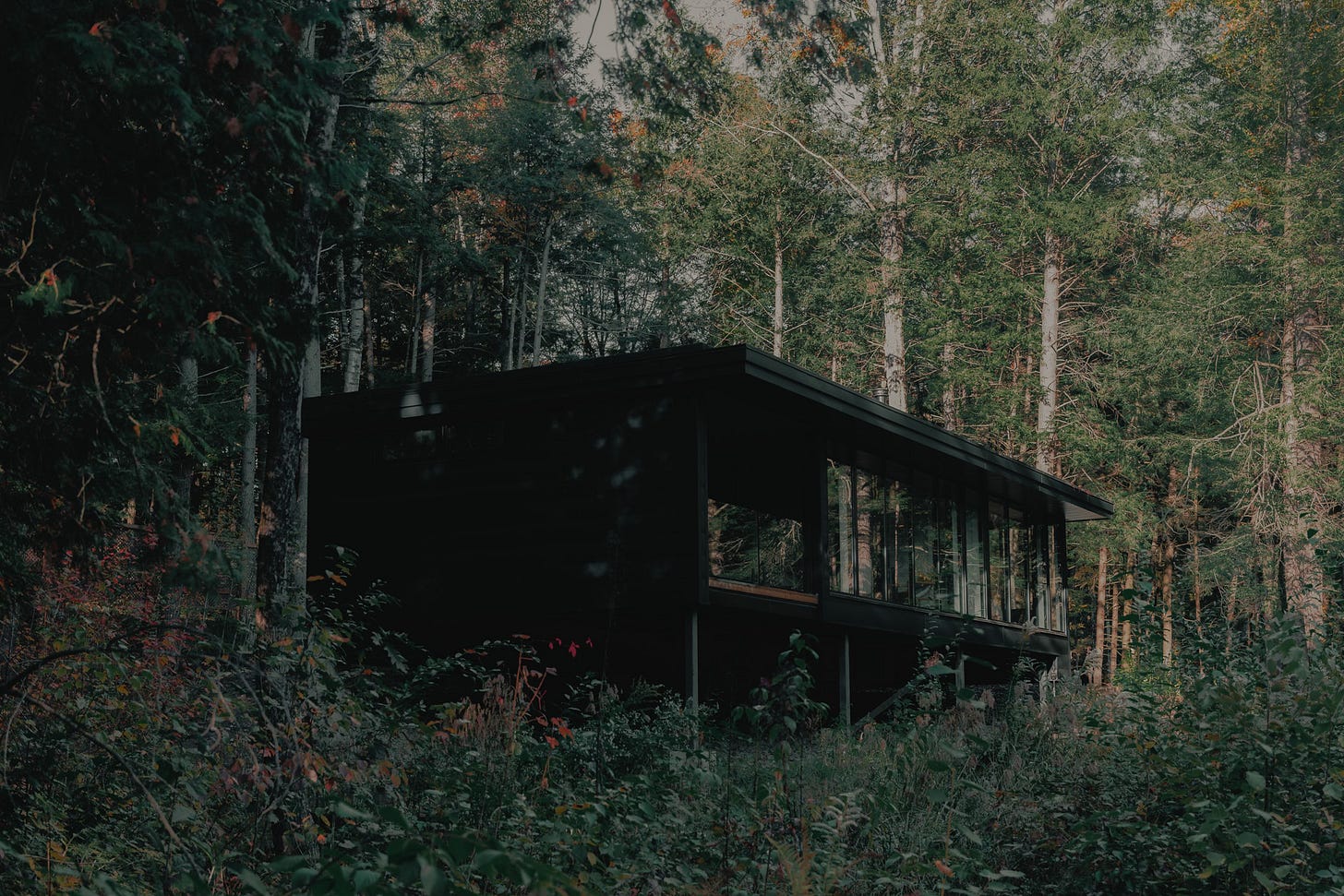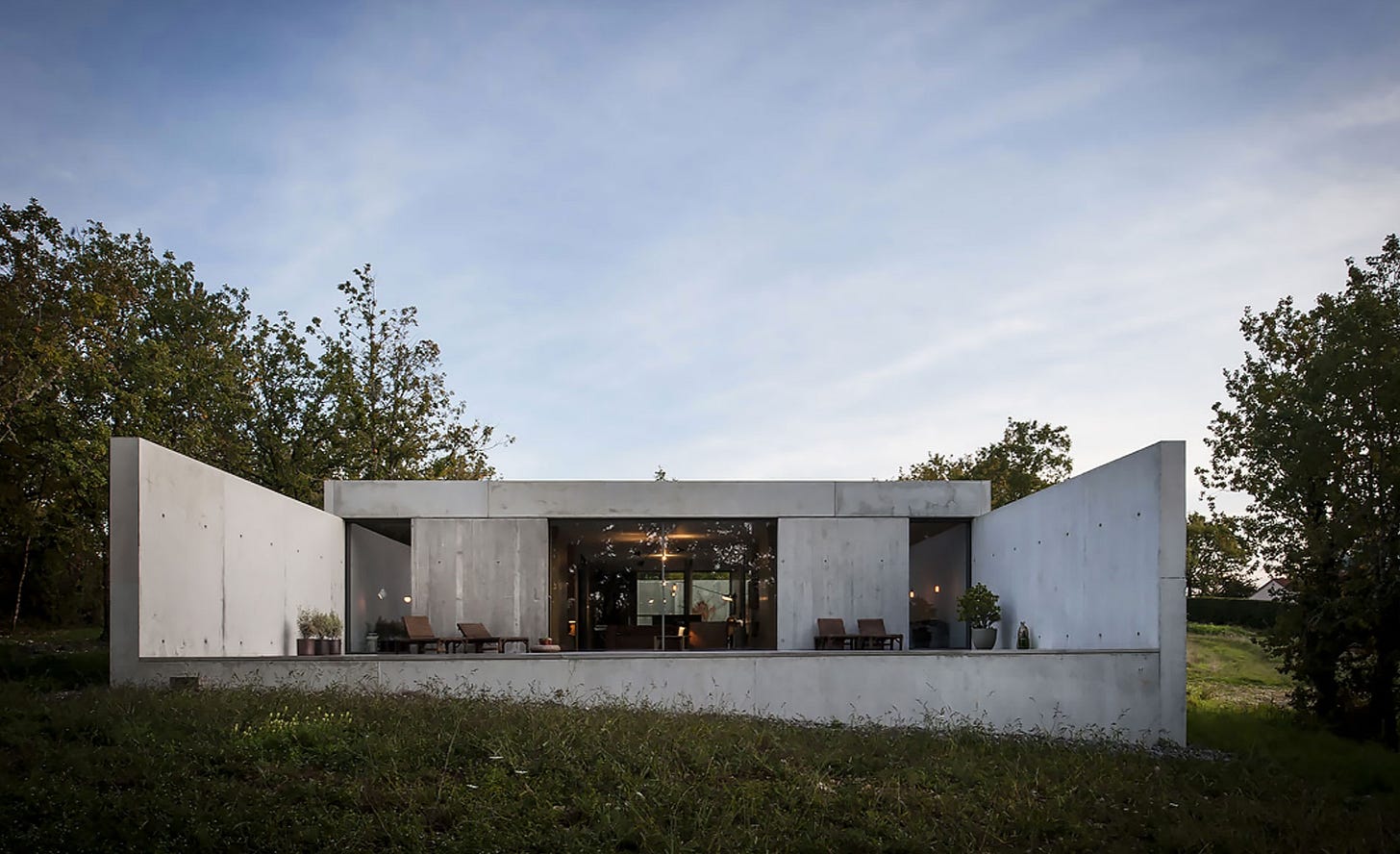018: somewhere else: for the ones craving a shift
hinter city project • Landscapes for the Future • The Offline Reset • Escaping Near & Far • Travel Playlist • Design Spotlight: Silent Living
Somewhere else doesn’t always mean far. it’s a shift in surroundings that changes how we feel, think, or create. This month, we’re looking at places and ideas that reframe what’s possible. From city apartments doubling as creative studios to landscapes that teach sustainability, each story is an invitation to step outside your usual frame and into a different rhythm.
This issue is about the pull of new places—and what a shift in environment can unlock inside us. Elsewhere isn’t about escape; it’s about expansion. It might be a walk through an unfamiliar street, a weekend in the woods, a long drive with the windows down, or a few hours in a space you’ve never been before.
Somewhere else can be a location, a state of mind, or simply the act of doing something unfamiliar. And while it can feel like the world is constantly delivering more bad news, there are still pockets of progress; projects, people, and places shaping a future worth wanting. This month, we’re looking for those sparks. The small shifts and hopeful changes that remind us we’re capable of building better.
hinter city project
hinter was born with a simple idea; to design architecture and spaces that connect us with nature. Our cabins and hotels are built as places to pause, to breathe, and to rediscover a sense of stillness in natural settings. This will always remain at the core of what we do.
But as we look ahead, we also see a responsibility, and an opportunity, to bring that same spirit into the places where people actually live their daily lives. Cities need spaces that carry the same peace, clarity, and quiet power that nature offers. hinter city is our first step in exploring what this means.
Set in Lisbon, Portugal, hinter city is part working studio, part lived-in showroom. It is not about filling rooms with plants, but about creating atmospheres that echo the qualities of nature: balance, light, silence, and grounding. It’s a place where design and daily rituals meet, and where collaborations with artists, brands, and thinkers can take shape. Partly to serve as an inspiration for city dwellers on how to bring peace into spaces.
hinter city is a way of asking how design can help cities feel more human, more present, and more alive.
More to come.
Landscapes for the Future
In Denver, students are transforming a school lawn into a sustainable landscape designed to dramatically cut water use. The project swaps thirsty grass for native plants, pollinator-friendly blooms, and hardy shrubs—creating an outdoor space that is both functional and ecological. It’s hands-on education in action, showing that small-scale changes can ripple outward into something much bigger.
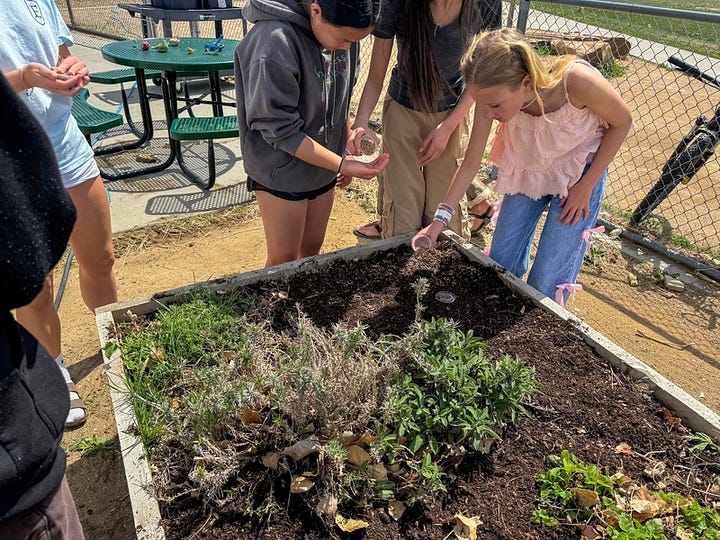
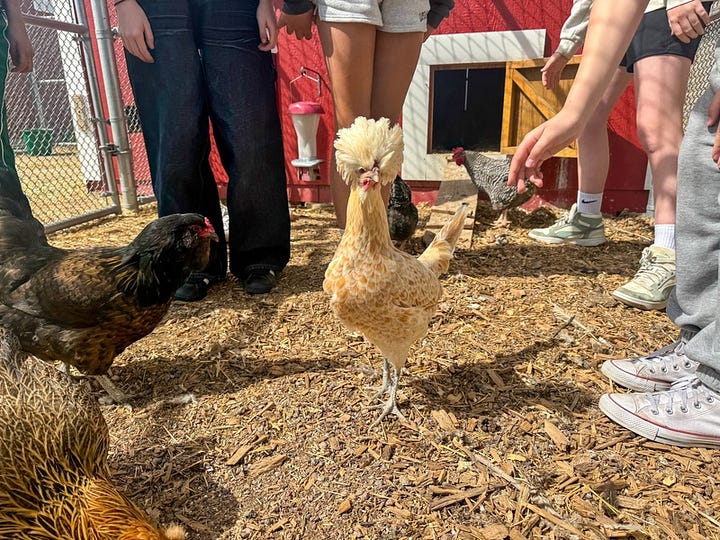
In Agoura Hills, California, the world’s largest wildlife crossing is taking shape over one of the busiest stretches of the 101 freeway. The Wallis Annenberg Wildlife Crossing is designed to reconnect habitats divided by decades of urban development, allowing mountain lions, deer, coyotes, and countless other species to move freely and safely between the Santa Monica Mountains and Simi Hills.
Now in its final phase, the project is carefully extending the bridge over a secondary road while preserving mature oak trees and replanting native vegetation to blend seamlessly into the surrounding landscape. When completed in 2026, it will be a lifeline, restoring an ancient migration route and proving that infrastructure can be built to serve not only people, but the ecosystems we share space with.
In Colombia, Fundación Organizmo is rethinking how communities design with nature. Their regenerative landscapes integrate traditional building knowledge with native planting, soil restoration, and water management. These projects bring back biodiversity, preserve cultural knowledge, and offer long-term climate resilience.
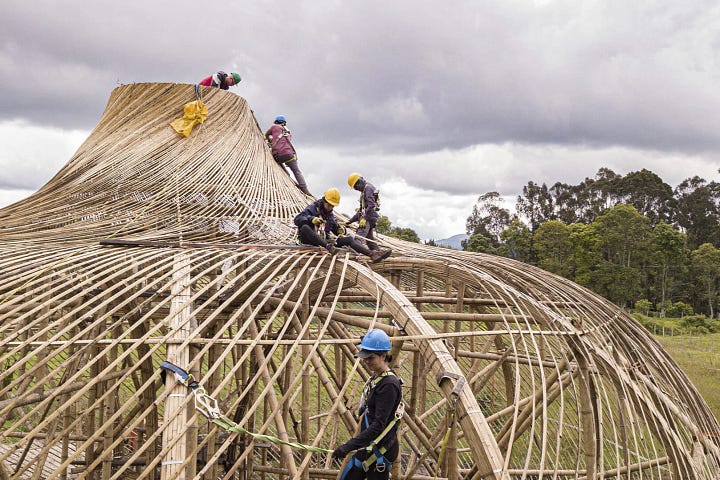
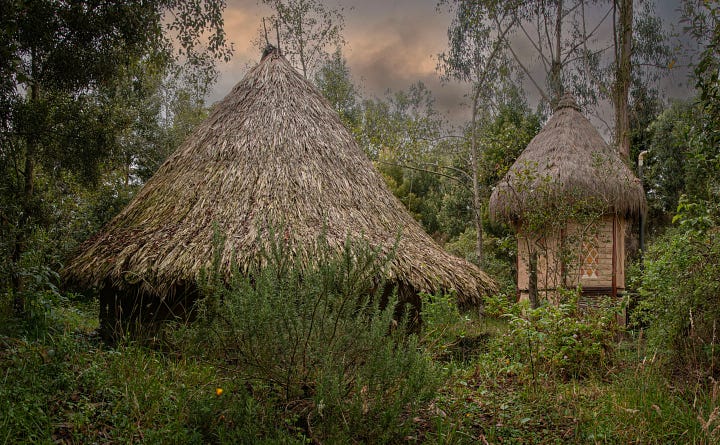
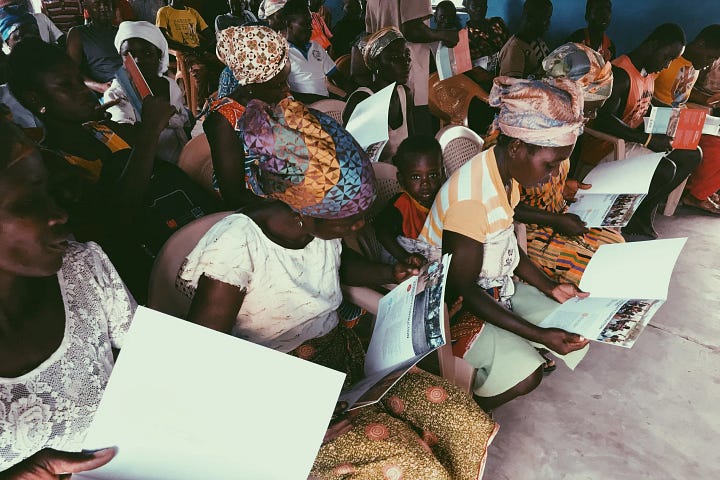
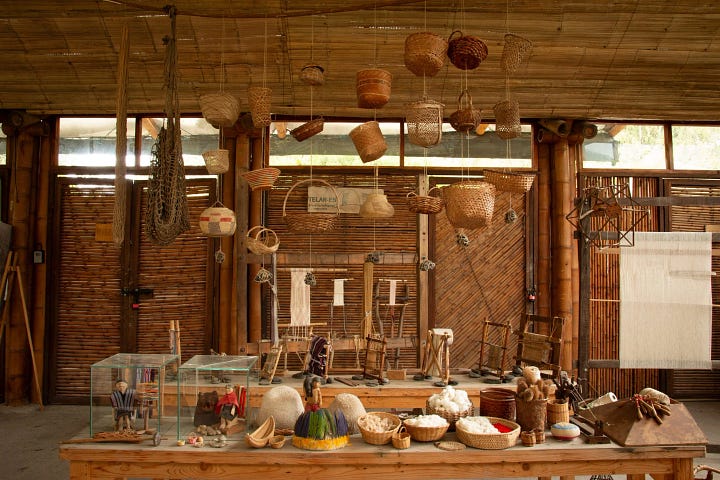
Different places, one shared vision: landscapes that work with the environment, not against it.
Design Spotlight: Silent Living
We’ve been fortunate enough to cross paths with both Manuel Aires Mateus — the architect whose work continues to shift how we think about space — and the founder of Silent Living, whose vision for hospitality is as much about care as it is about design. Their Alentejo home, near Monsaraz, is the kind of place that quietly redefines what it means to “stay” somewhere.
Awarded Arch Daily’s Building of the Year in 2020, it’s a structure that seems to melt into the earth while emerging from it at the same time. From a distance, you might only notice a few geometric hints: private patios cut into the hillside and a striking dome that gathers light and people in equal measure. Step inside and the conversation between architecture and landscape becomes clear: three ensuite rooms, each with its own patio; a kitchen and living area opening onto a grand terrace with sweeping views over Alqueva Lake; and at the center, that dome, carved from the slope itself, acting as the gravitational heart of the home.
Silent Living came to care for this house in the most fitting way: over a long lunch with friends. What began as a meal ended with an invitation — to look after it, to share it, to let others feel the same deep ease they felt that day. It’s a space where nature is a co-host, and where time bends to accommodate what matters most: connection, beauty, and the slow unfolding of days.
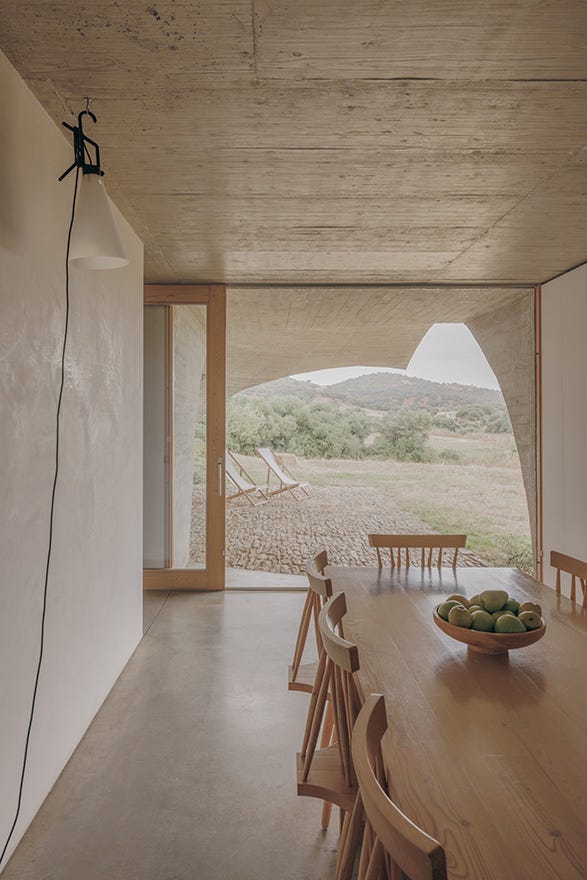
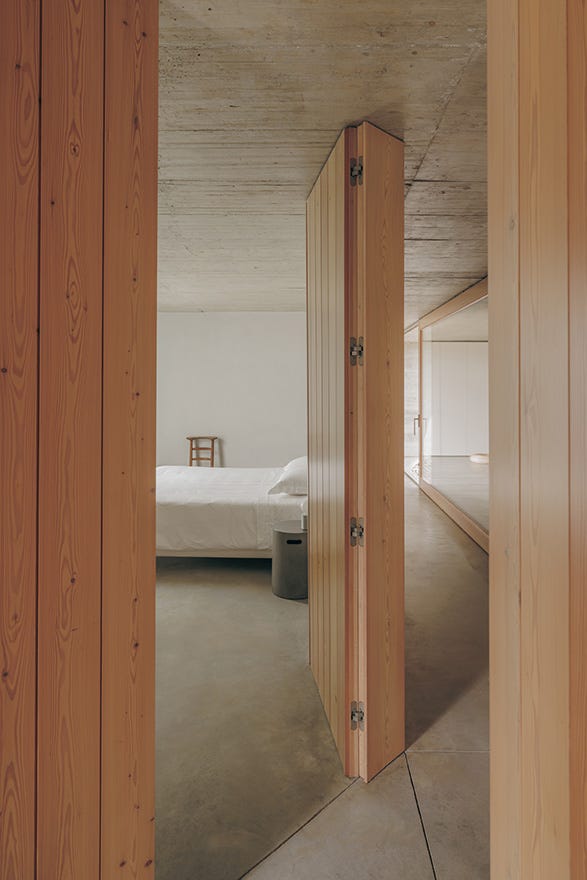
Your Travel Playlist
A selection that feels borderless, a little cinematic, funky, and works whether you’re on a train, cooking, or walking through a city you don’t know yet.
The Art of Escaping Nearby
The best kind of escape is often within reach. Take your lunch to the park instead of your desk. Try a walking route you’ve never taken. Stay overnight in a place just 45 minutes from home. Not always about distance; it can simply be about disrupting routine.
We’ve always believed in micro-escapes. That an intentional space, tucked into nature, can offer all the refresh your nervous system needs. Especially when you leave your laptop behind.
Here’s a few spaces we have our eye on.
Nortehaus
Two hours from Toronto, Nortehaus is a space built with intention. The architecture blends Nordic minimalism with Japanese warmth, opening to the forest in ways that make the outdoors feel like part of the room.
Every detail is deliberate: the cedar sauna looking out to the trees, the floor-to-ceiling windows framing the light, the choice of materials that age well and invite touch. It’s the kind of place that asks you to slow down, to notice the angle of the sun at different times of day, to take your coffee outside even if it’s cold.
It’s the kind of thinking we connect with deeply at hinter — design as something you live with, not just look at. Spaces that meet you where you are, and change how you feel.
Why we love it: It proves that minimalism doesn’t have to feel cold. Nortehaus is a reminder that restraint, when paired with warmth, can create a home that feels as nurturing as it is beautiful.
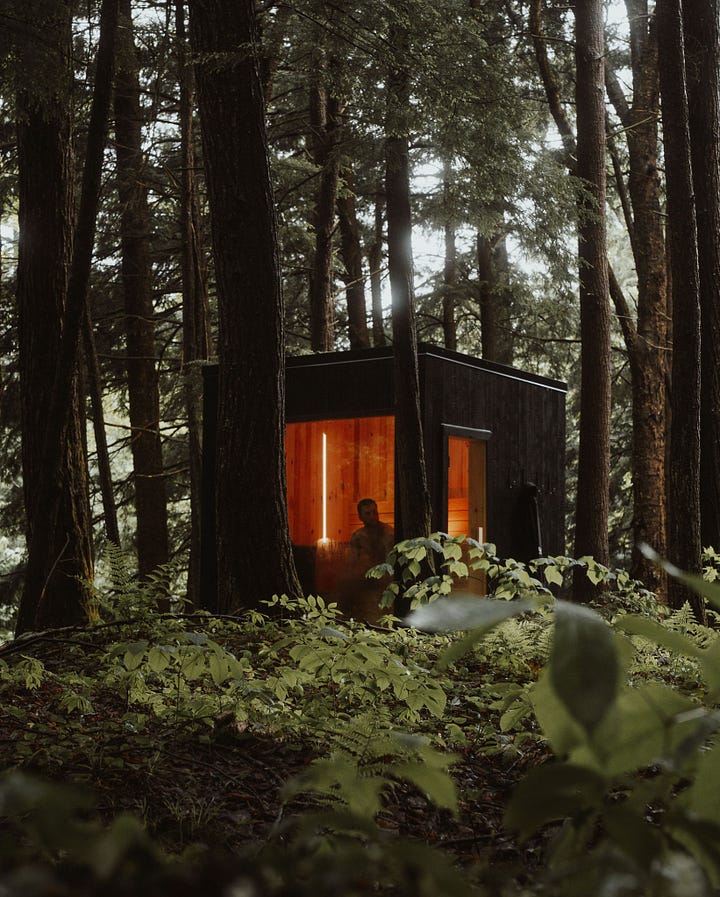
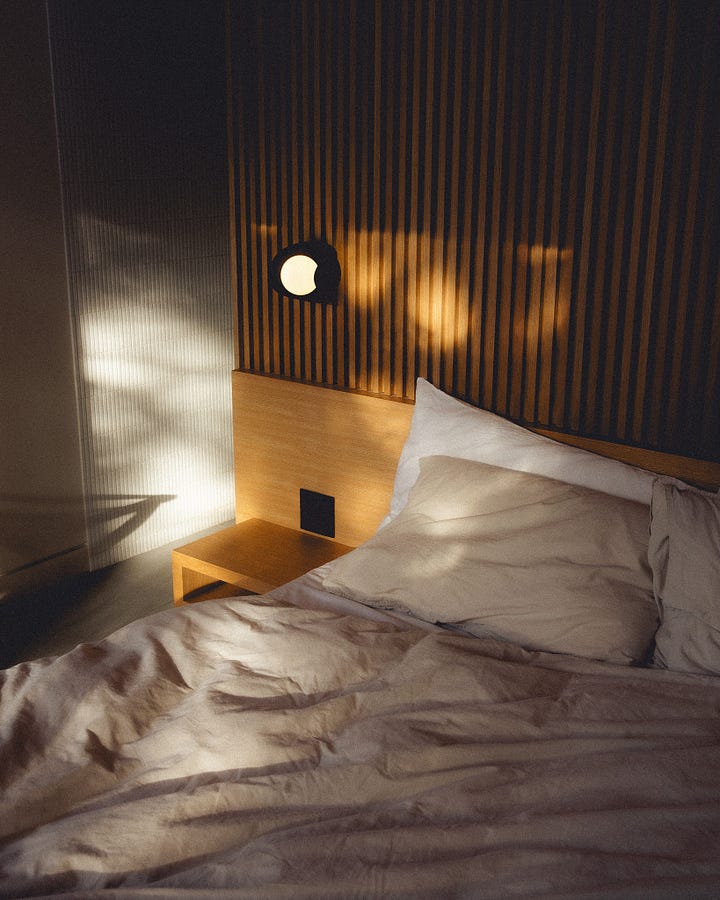
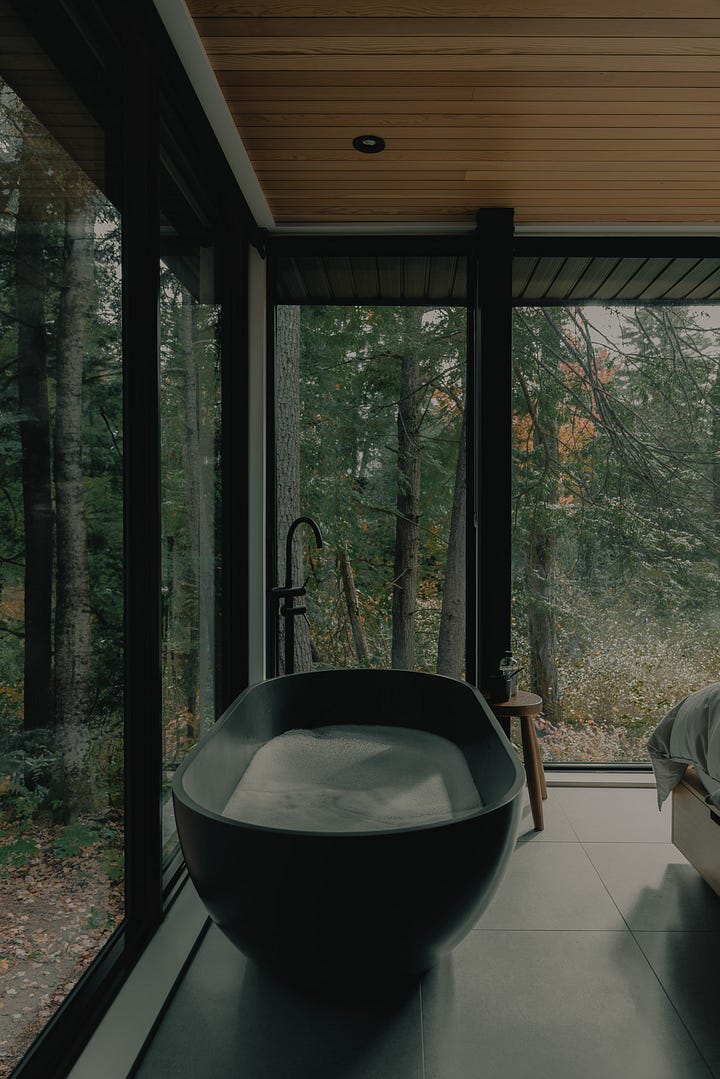
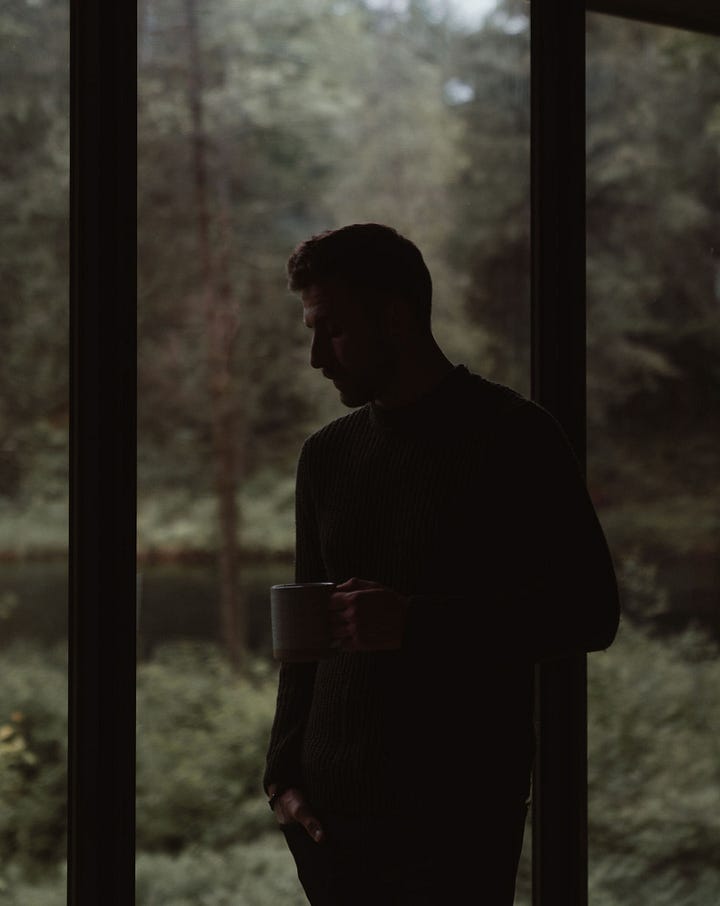
La Maison H
For those who are seeking a flight abroad, in France’s Occitanie region, La Maison H stands as a refined ode to mid-century modernism. Originally built in the 1960s and restored with precision, it balances the honesty of its original form with subtle, contemporary updates.
Natural stone, warm wood, and generous panes of glass create a dialogue between indoors and out. The architecture frames the surrounding countryside rather than competing with it — each room feels in conversation with the landscape.
La Maison H is a study in how good design can outlast decades without losing its soul.
Why we love it: Spaces like this remind us that modernism, when done with care, is timeless. It’s the kind of house that invites you to slow down, pay attention, and let the view do most of the talking.

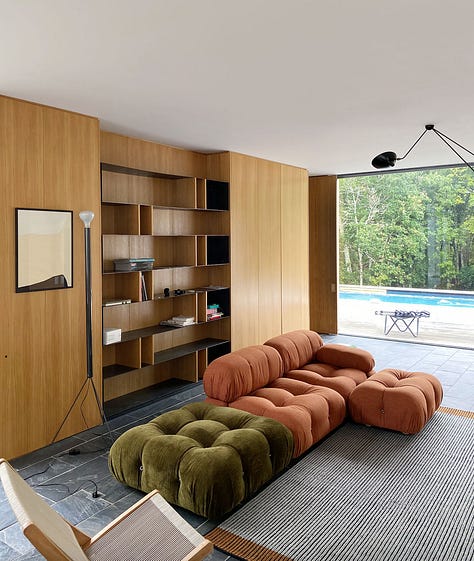
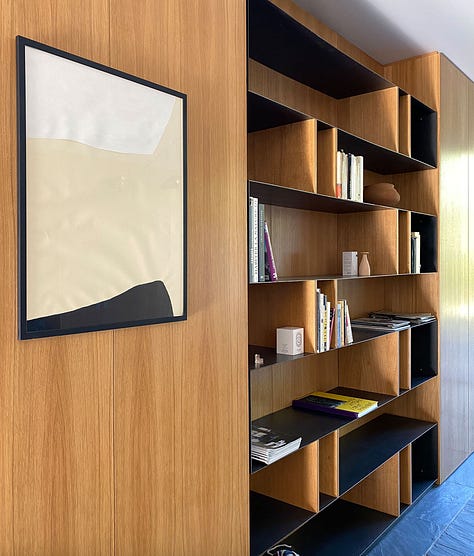
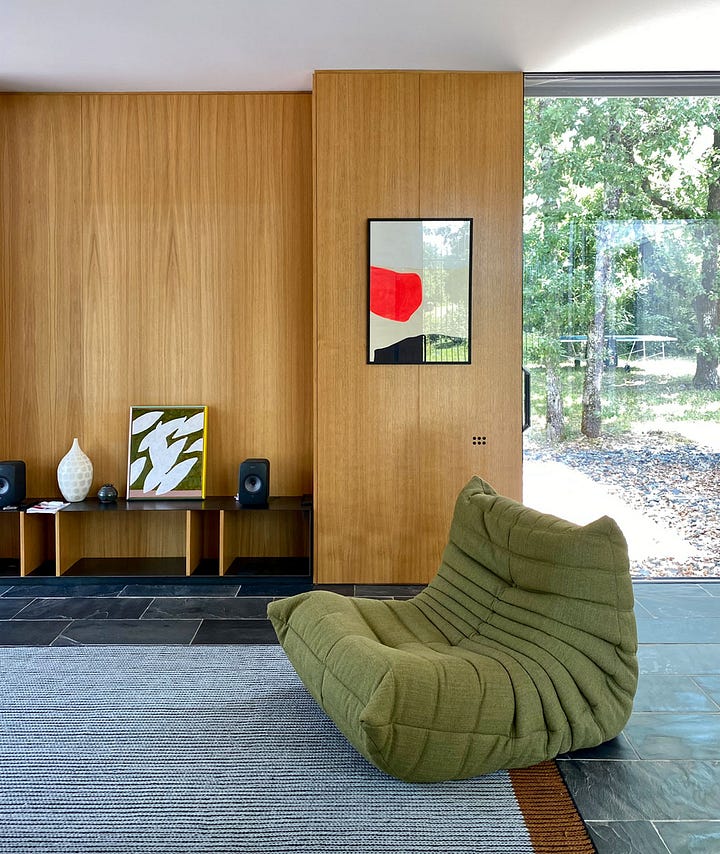
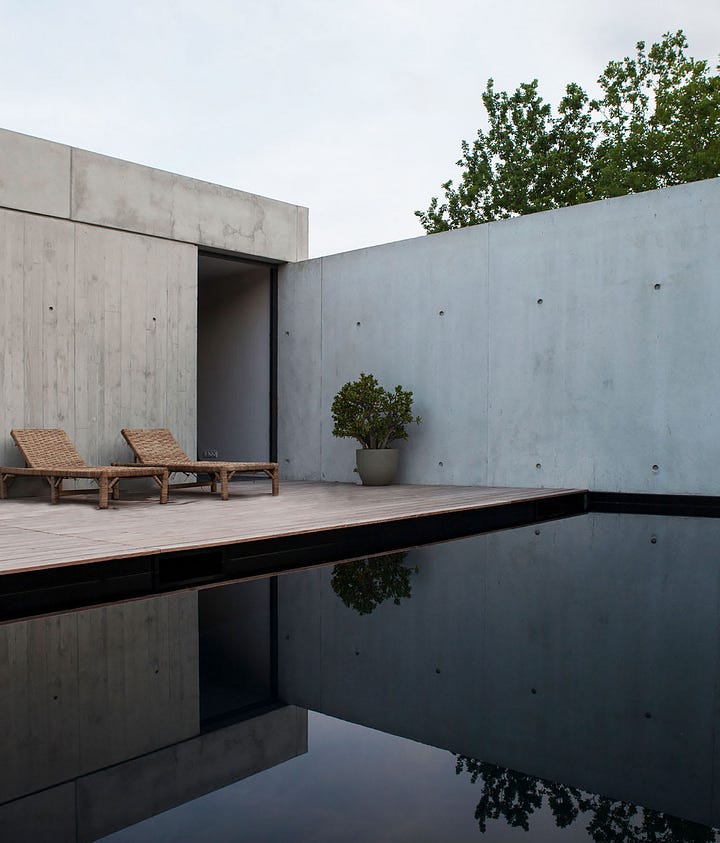
Offline Practice
Stillness is a practice. It’s something you build.
Here are a few practices we’ve been returning to:
Weekly phone-free walks
Keeping one corner of the house tech-free
Reading physical books in the morning
Brewing coffee or whisking up matcha without multitasking
Writing down one line a day
No need for something big. Just real. Just consistent.
Closing Thought
The magic of somewhere else isn’t about how far you go, it’s about how open you are when you get there. And while the world can feel heavy, remember there’s still beauty being made, still people reimagining what’s possible. Step out, even briefly. Let new sights, sounds, and textures work on you. Then carry a piece of that optimism back into the life you already have.
The future is bright.
Any thoughts provoked? Ideas sparked? Any corners of the internet worth sharing? Join the conversation and drop a comment below.
Want to find us in other galaxies?
Interested in being one of our Artists in Residence? Apply here.


